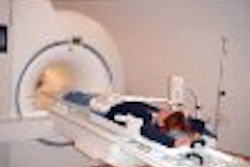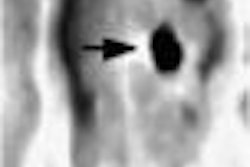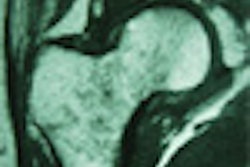Harcourt Health Sciences, Philadelphia, 1998, $79
Pediatric Radiology: The Requisites serves as an excellent introduction to pediatric imaging, as well as a friendly resource. It distills the comprehensive information typically found in the classic reference texts by Kirks and Caffey into 300 very approachable pages. Moreover, it provides tips and insight that will help young radiologists -- who are often uncomfortable with youthful patients -- to function as competent pediatric imagers.
The book is divided into 8 chapters. Chapter 1 is a general introduction, while chapters 2 through 8 are devoted to the major organ systems. Like other books in The Requisites series, each chapter is preceded by a helpful outline and followed by a suggested reading list. Images are numerous and well annotated. Important points, differential diagnoses, and decision algorithms are highlighted in boxes.
Most chapters begin with a section devoted to the implementation of various imaging modalities within each organ system. Equal attention is paid to "old school" techniques such as fluoroscopy, and high-tech modalities like MR. The book also covers pediatric applications of nuclear medicine techniques.
This section is especially valuable in the on-call setting. For example, chapter 5 begins with a review of the various types of oral contrast material -- which could come in very handy for the first-year resident who is asked to rule out a malrotation for the first time.
Emerging topics in pediatric radiology, such as bowel obstruction, intussusception reduction and the interpretation of the neonatal chest radiographs, are covered in a comprehensive manner.
The second chapter is devoted to the chest. It reviews the upper airway, thoracic skeleton, lungs, and mediastinum. Congenital heart disease is covered in chapter 3. The next chapter reviews the gastrointestinal system with accessory organs of the gastrointestinal tract. The genitourinary system covered is covered in chapters 5 and 6. Chapter 7 gives a short review of the musculoskeletal system, and chapter 8 concludes with a review of pediatric neuroradiology.
As one would expect, it is impossible to cover the breadth of information in pediatric radiology in only 300 pages. Many topics are only touched upon in this text, and not covered in sufficient detail to serve as a reference.
Yet despite its limitations, Pediatric Radiology: The Requisites is the only textbook I know of that is written specifically for radiology residents. It does cover the most important areas in sufficient detail, while offering some insight into the joy of caring for our smallest patients.
By Dr. Matthew BenjaminAuntMinnie.com contributing writer
Dr. Benjamin is a fourth-year resident at Massachusetts General Hospital in Boston.
If you are interested in reviewing a book, let us know at [email protected].
The opinions expressed in this review are those of the author, and do not necessarily reflect the views of AuntMinnie.com.
Copyright © 2001 AuntMinnie



















